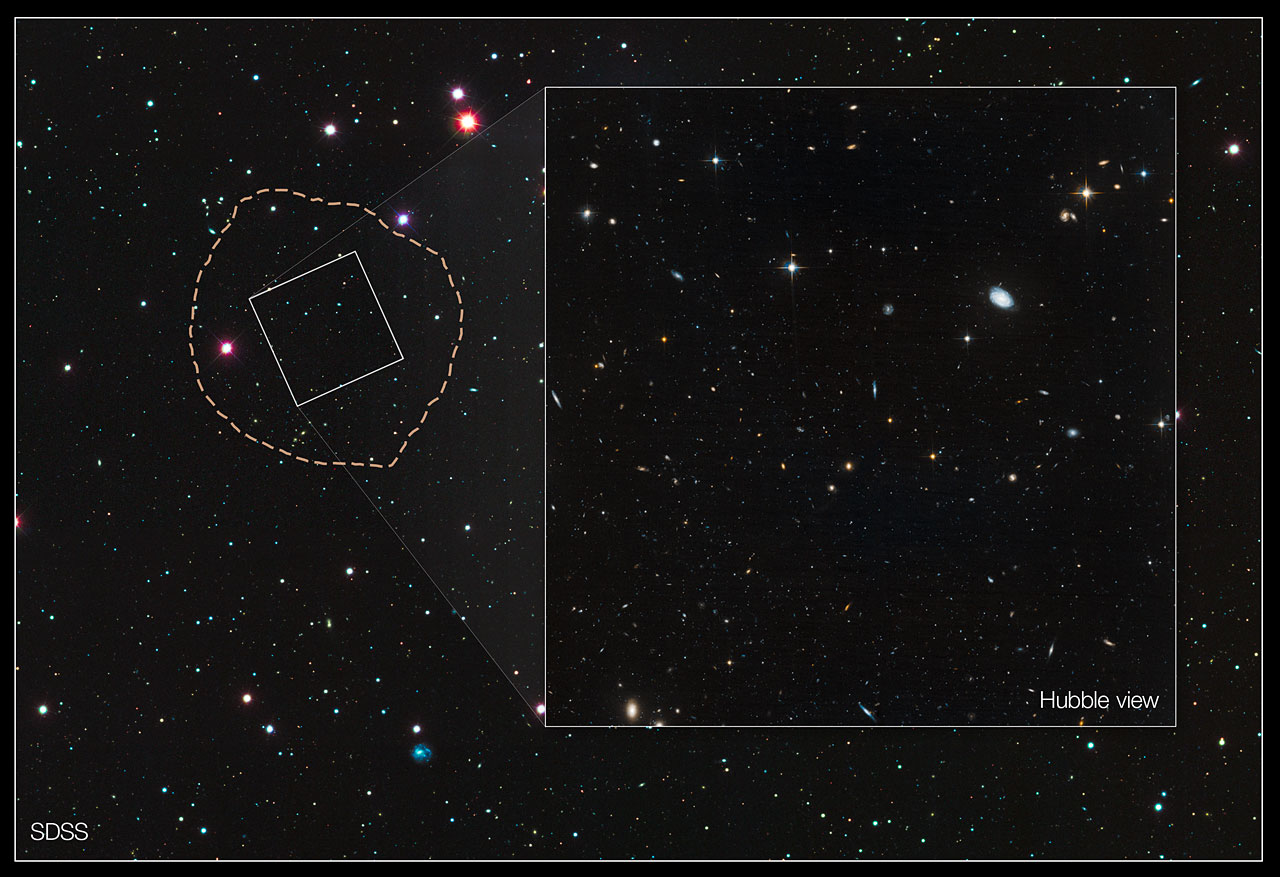Hercules, Leo IV and Ursa Major dwarf galaxies all started forming stars more than 13 billion years ago - and then abruptly stopped shortly after the Big Bang.The extreme age of their stars is similar to Messier 92, the oldest known globular cluster in the Milky Way.
The relics are evidence for a transitional phase in the early Universe that shut down star-making factories in tiny galaxies. This phase seems to coincide with the time when the first stars burned off a fog of cold hydrogen, a process called reionization. In this period, which began in the first billion years after the Big Bang, radiation from the first stars knocked electrons off primeval hydrogen atoms, ionizing the Universe’s cool hydrogen gas. The period of reionization is also the limit for how far telescopes can see: the process is what rendered the Universe’s hydrogen gas transparent to ultraviolet light.

Leo IV is one of more than a dozen ultra-faint dwarf galaxies found lurking around the Milky Way. The wide image, taken by the Sloan Digital Sky Survey, is a view of Leo IV and the surrounding neighborhood. The galaxy resides 500 000 light-years from Earth. The dotted line marks the galaxy’s boundaries, measuring about 1100 light-years wide. The small white box outlines the Hubble Space Telescope’s view. Leo IV has so few stars, roughly several thousand, that astronomers had difficulty identifying it as a galaxy. Astronomers discovered Leo IV in Sloan Digital Sky Survey images by spotting a region where a clump of stars was huddled closer together than stars in areas around it. The dwarf galaxy is composed of Sun-like stars, fainter, red dwarf stars, and some red giant stars brighter than the Sun. Hubble’s close-up view is shown in the inset at right, measuring 483 light-years wide. Astronomers used Hubble to measure the ages of the stars in Leo IV and two other ultra-faint dwarf galaxies. The Hubble image is a composite of exposures taken in January 2012 by the Advanced Camera for Surveys. Credit: NASA, ESA, and T. Brown (STScI)
The same radiation that sparked universal reionization also appears to have squelched star-making activities in dwarf galaxies. The small irregular galaxies were born about 100 million years before reionization began and had just started to churn out stars at that time. Roughly 2000 light-years wide, these galaxies are the lightweight cousins of the more luminous and higher-mass star-making dwarf galaxies near our Milky Way. Unlike their higher-mass relatives, the puny galaxies were not massive enough to shield themselves from the harsh ultraviolet light. What little gas they had was stripped away as the flood of ultraviolet light rushed through them. Their gas supply depleted, the galaxies could not make new stars.
The discovery could help explain the “missing satellite problem” - why computer simulations predict that thousands of dwarf galaxies should be around the Milky Way but only a few dozen have been observed. One possible explanation for the low number discovered to date is that there has been very little, or even no star formation in the smallest of these dwarf galaxies, leaving them virtually invisible.
The movie begins with Hubble’s image of the region in which Leo IV resides, then morphs into a view of the colors of the galaxy’s stars. The stars are next shown on the Hertzsprung-Russell (H–R) diagram, which traces the types and evolution of “main-sequence” stars by showing the relationship between a star’s color, based on its temperature, (horizontal scale) and its intrinsic brightness (vertical scale). Main-sequence stars are in the stable, middle phase of their development. In this diagram, the galaxy’s main-sequence stars are the same mass as our Sun or smaller. The graph then charts how the stellar distribution would look 1 billion years after the galaxy formed. Massive and hot, blue stars fill in the upper part of the main sequence. The animation compresses billions of years into just a few seconds, showing that over time the more massive stars evolve faster. They leave the main sequence to become red giant stars (upper right). Their departure leaves behind the cooler, lower-mass stars that evolve more slowly over many billions of years. Credit: NASA, ESA, T. Brown (STScI)
The Sloan survey recently uncovered more than a dozen of these galaxies in our cosmic neighborhood. These have very few stars — only a few hundred or thousand — but a great deal of dark matter, the underlying scaffolding upon which galaxies are built. Normal dwarf galaxies near the Milky Way contain 10 times more dark matter than the ordinary matter that makes up gas and stars, while in these so-called ultra-faint dwarf galaxies, dark matter outweighs ordinary matter by at least a factor of 100. Astronomers think the rest of the sky should contain dozens more of these ultra-faint dwarf galaxies with few stars, and the evidence for squelched star formation in the smallest of these dwarfs suggests that there may be still thousands more with essentially no stars at all.
“By measuring the star formation histories of the observed dwarfs, Hubble has supported the theoretical explanation for the paucity of such objects, according to which star formation in the smaller clumps would be shut down by reionisation,” said Jason Tumlinson of the Space Telescope Science Institute, a member of the research team.
Published in The Astrophysical Journal Letters.




Comments